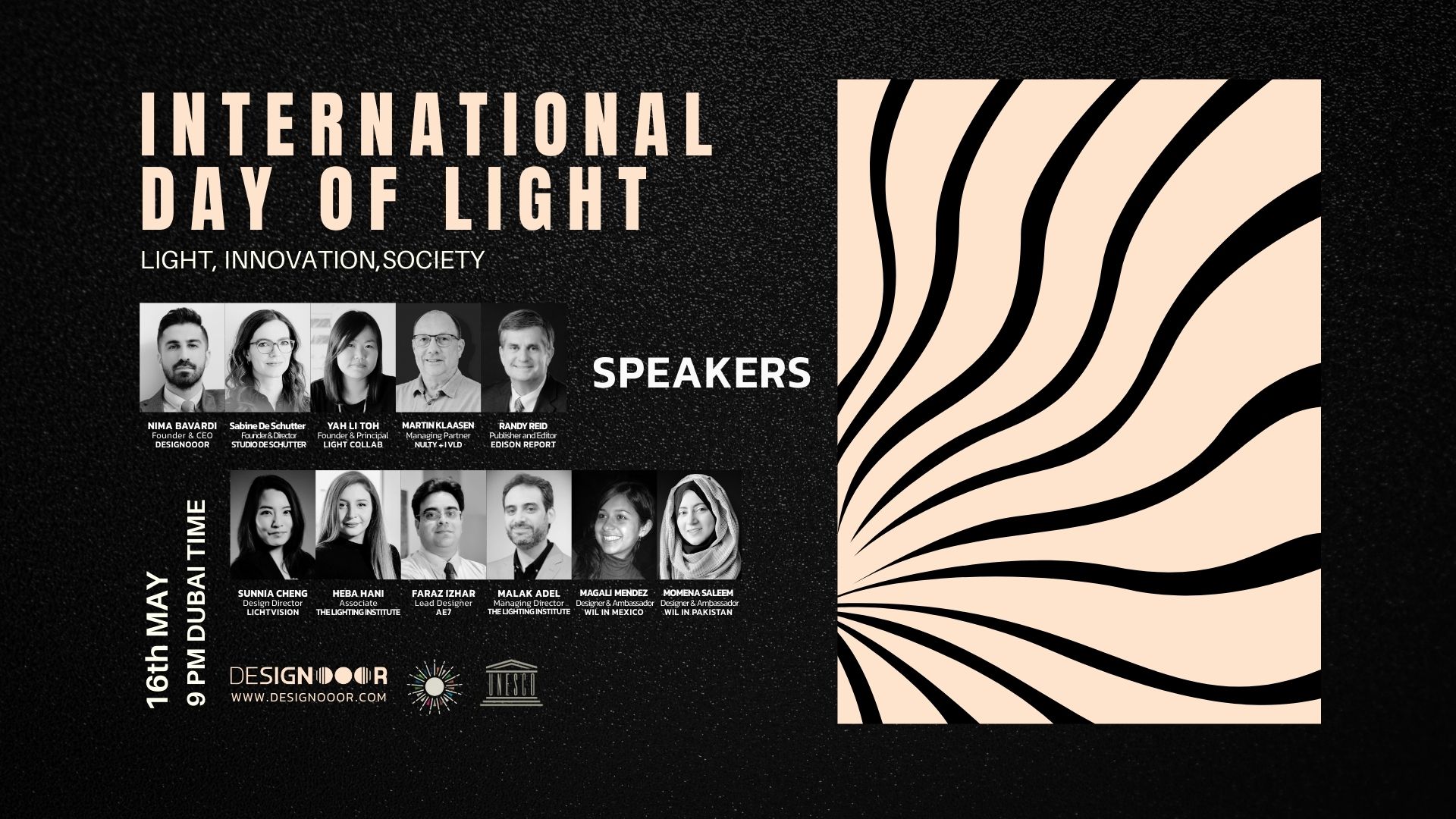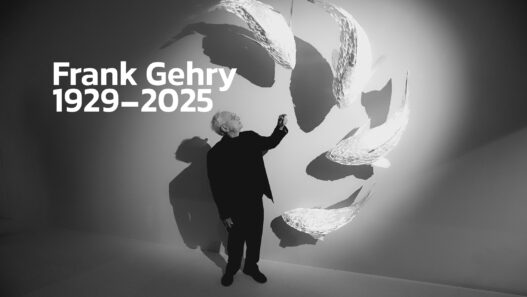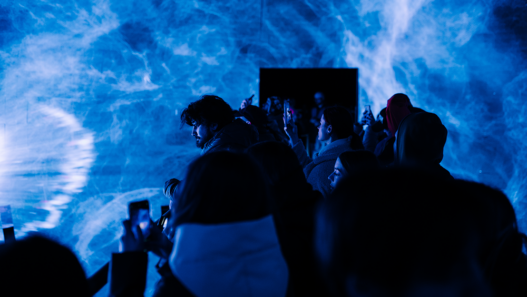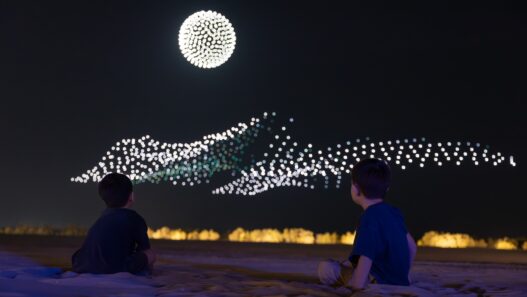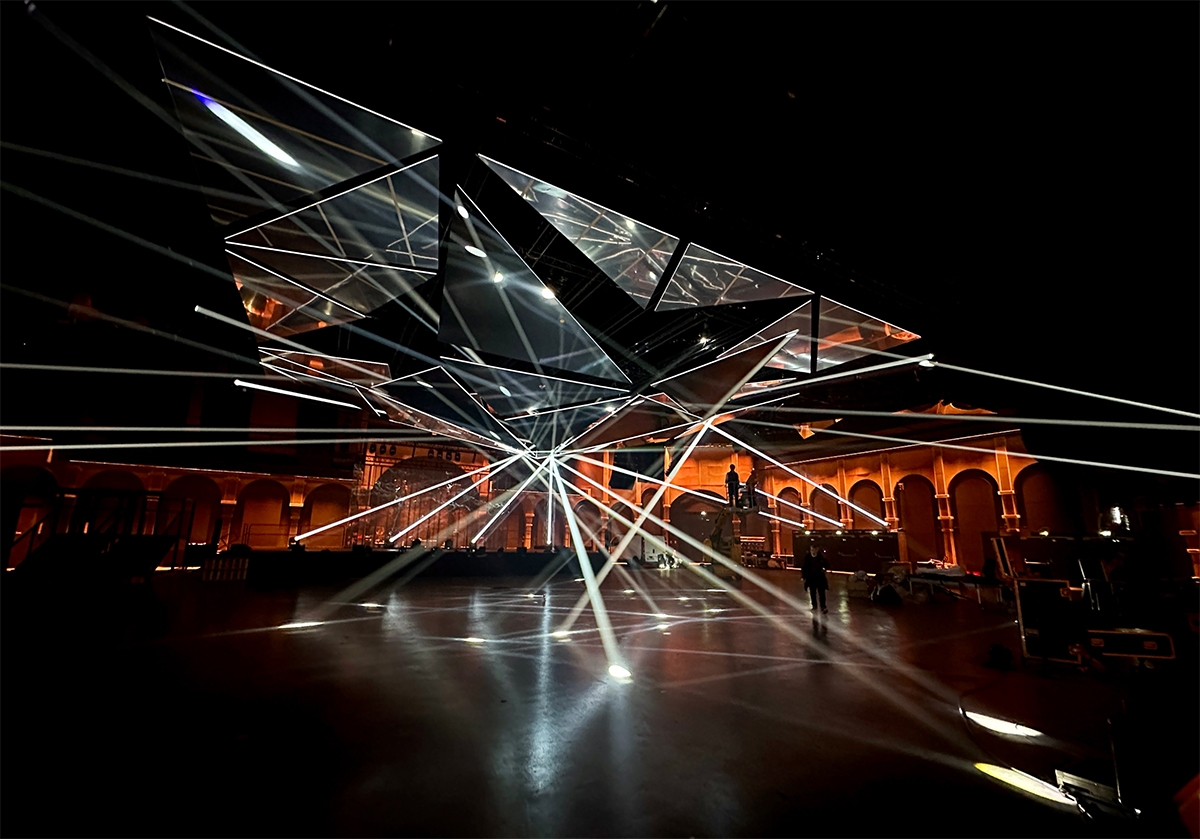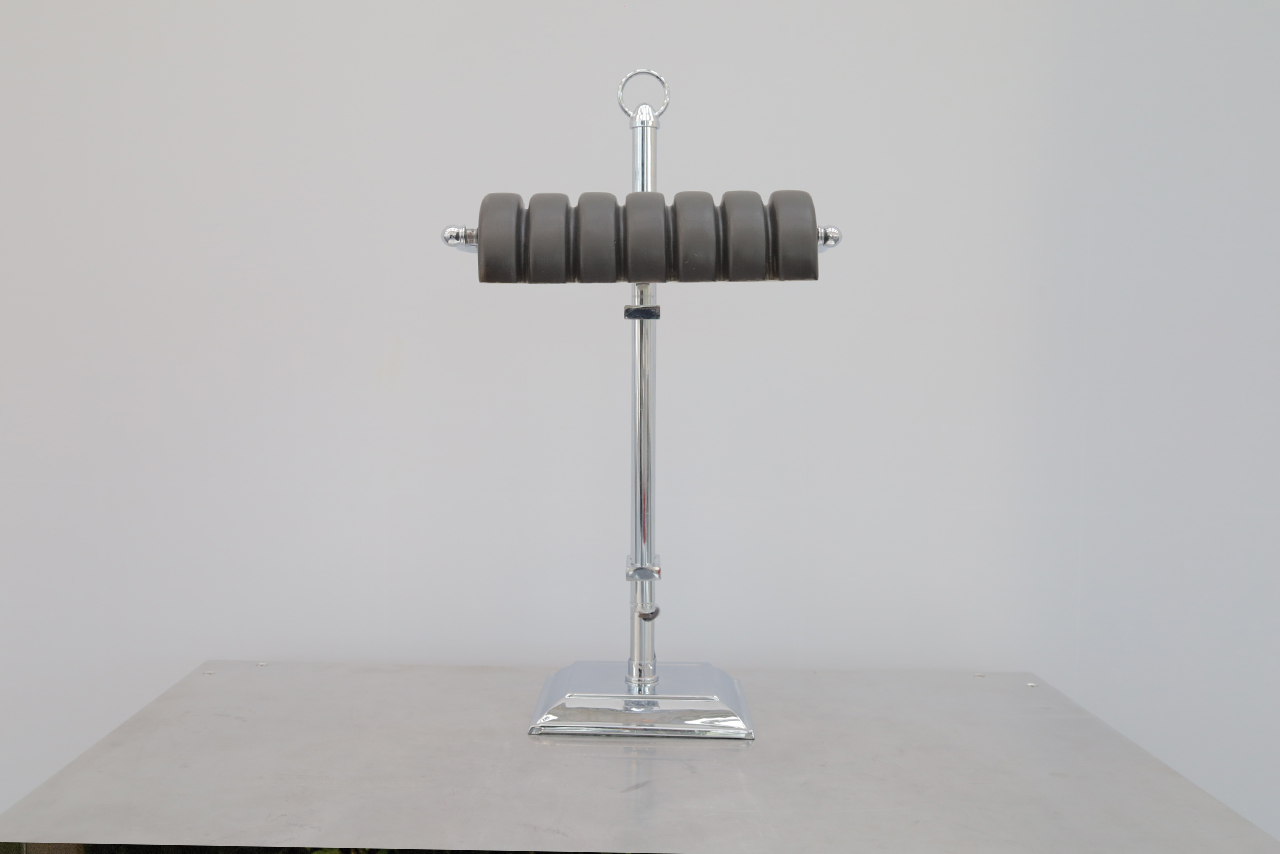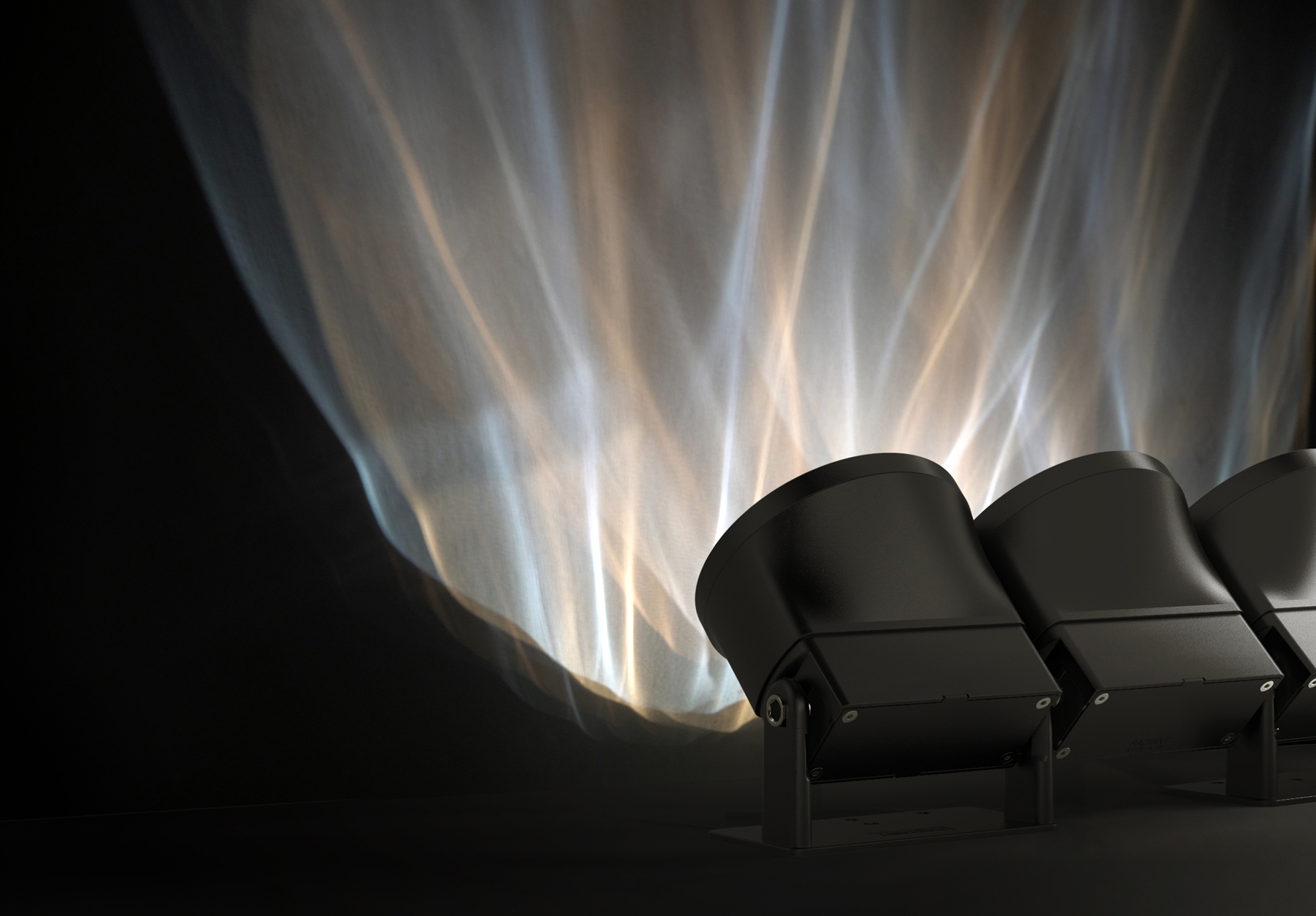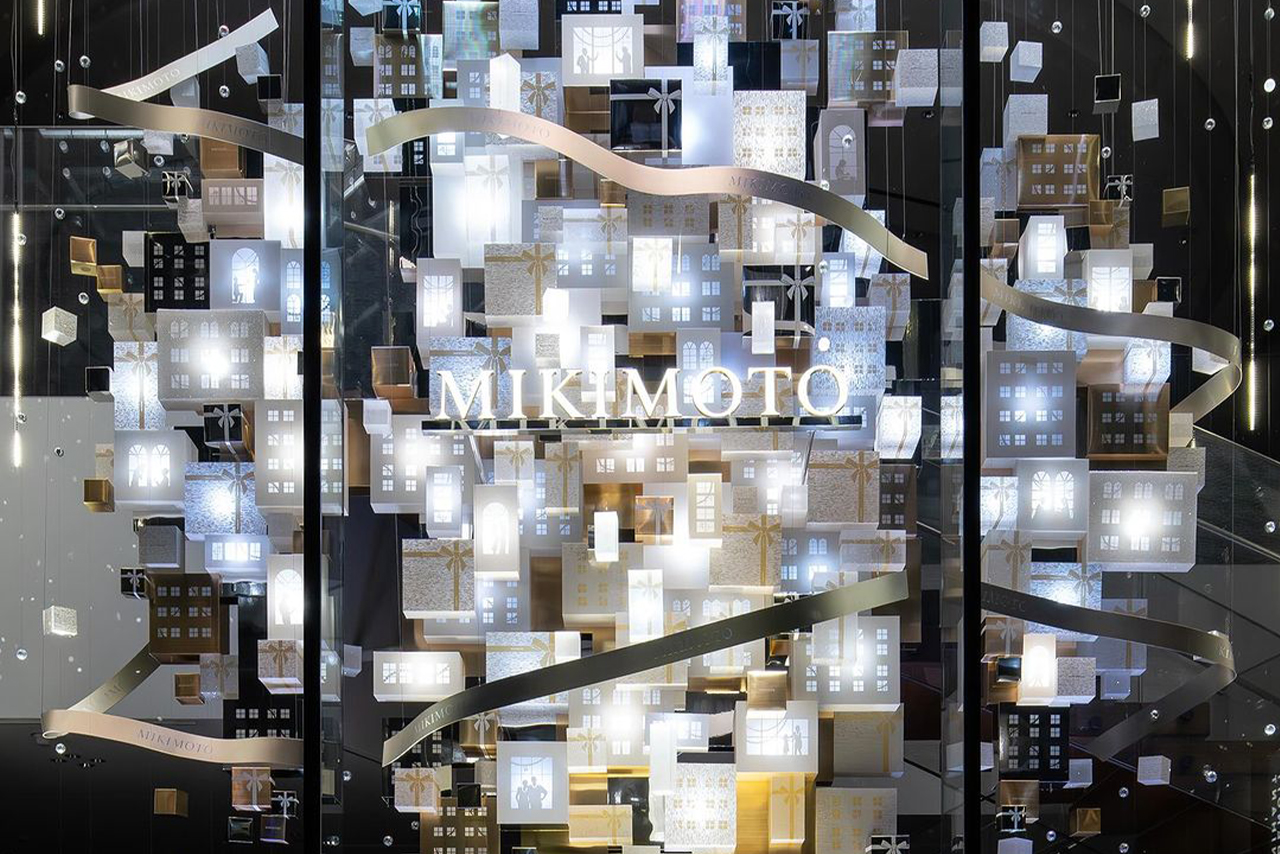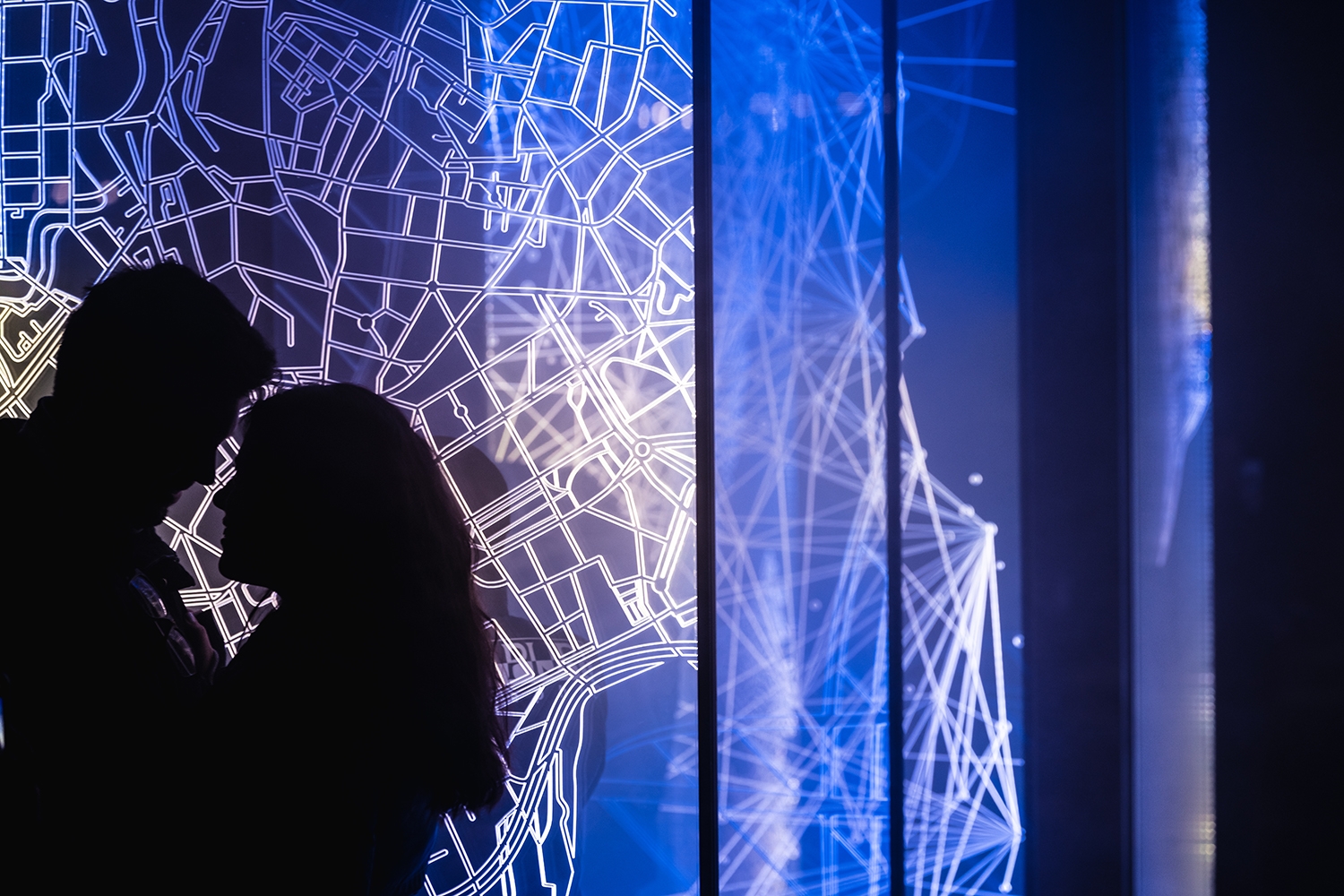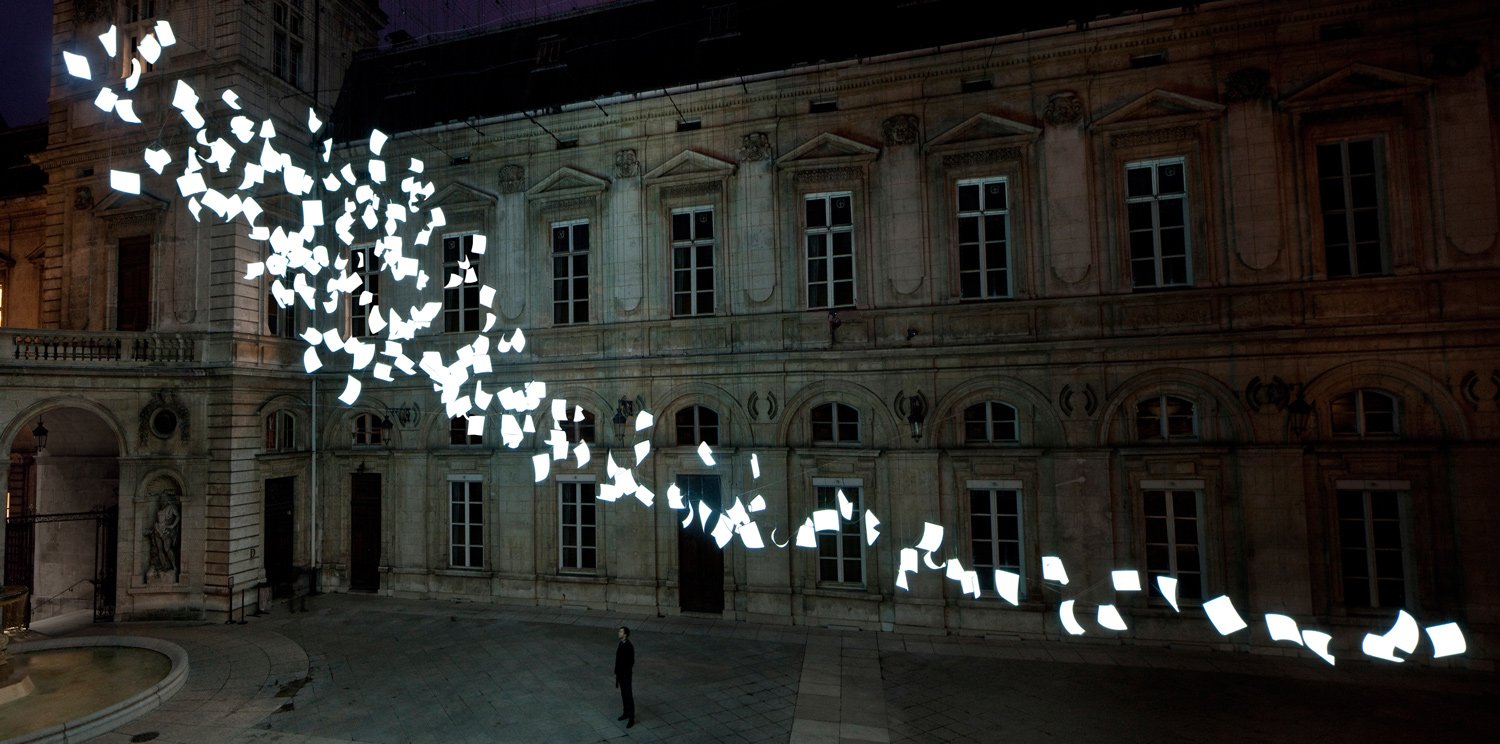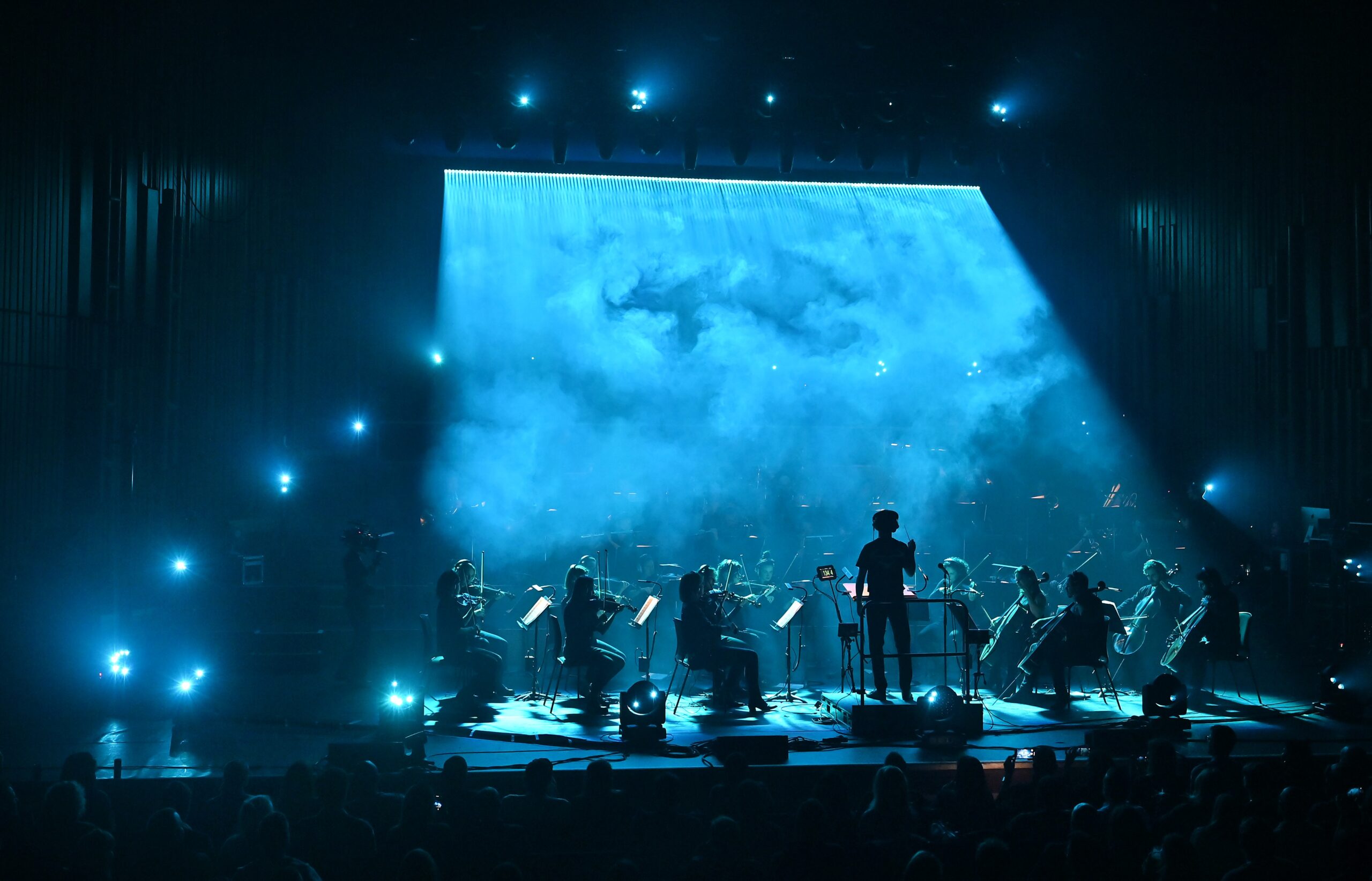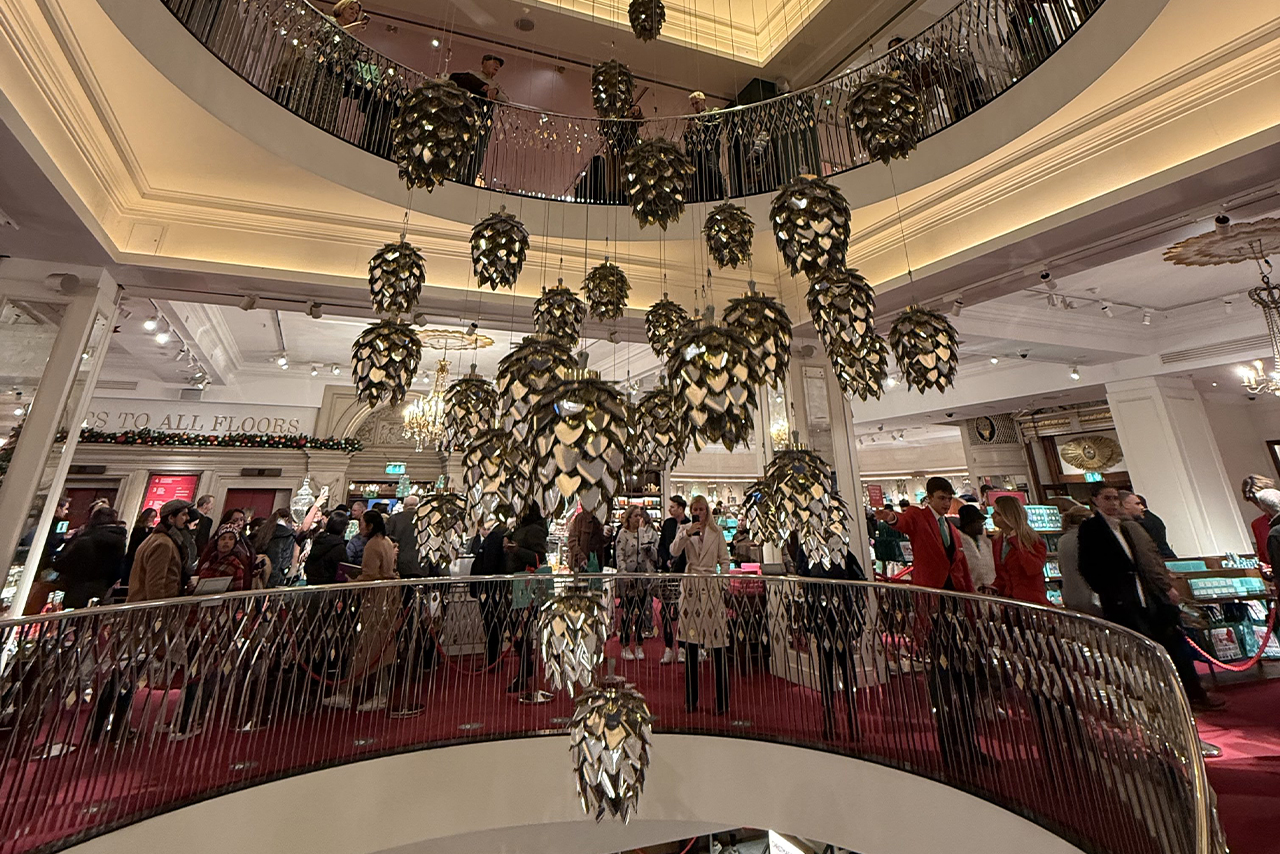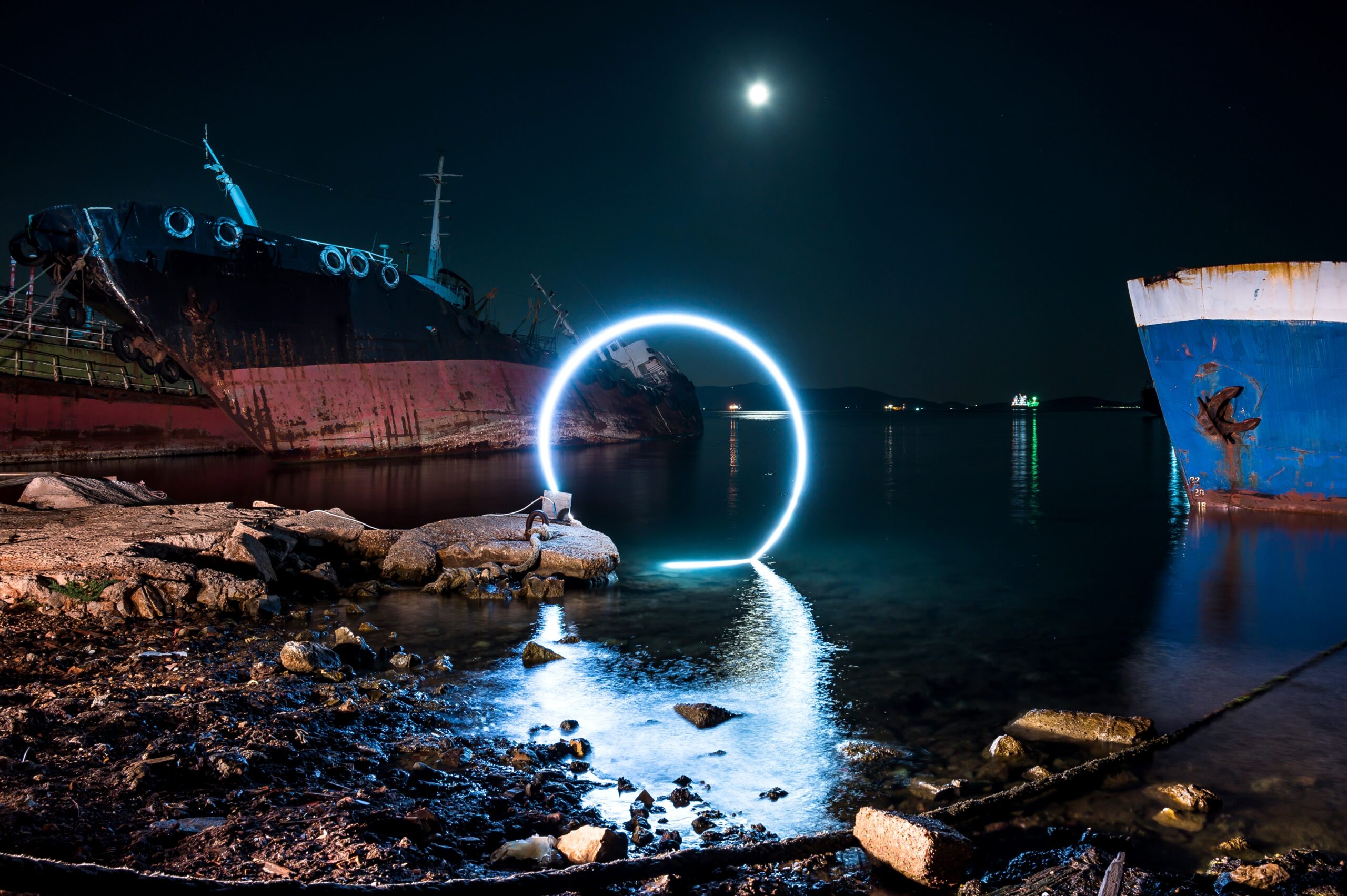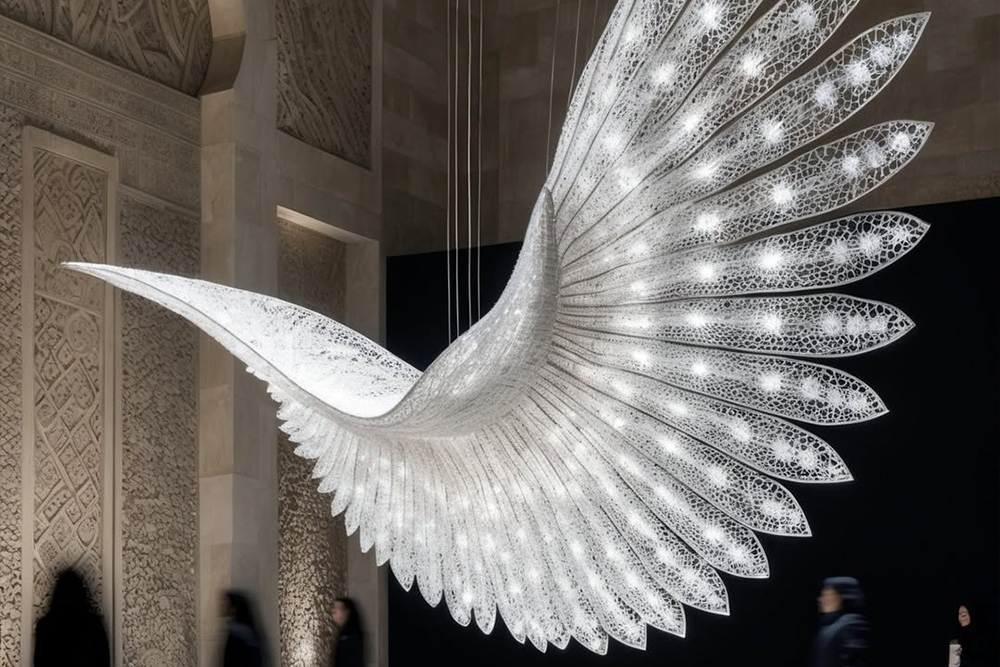The “Phantom” lighting installation in Paris’ Accor Arena, as depicted in these photos and text, is a remarkable example of avant-garde scenography that leverages minimalist and industrial design aesthetics to immerse the viewer in a surreal, almost otherworldly experience. The suspended 170-square-meter mirror structure serves as both a reflective medium and a spatial divider, blurring the line between observer and environment. The choice of mirrors and light to create the impression of “going to the other side” of reality evokes a strong sense of depth and transcendence. The inspiration seems to stem from modern installations at the intersection of robotics and kinetic art, resembling other mirror and light-based works in contemporary art galleries and urban installations.
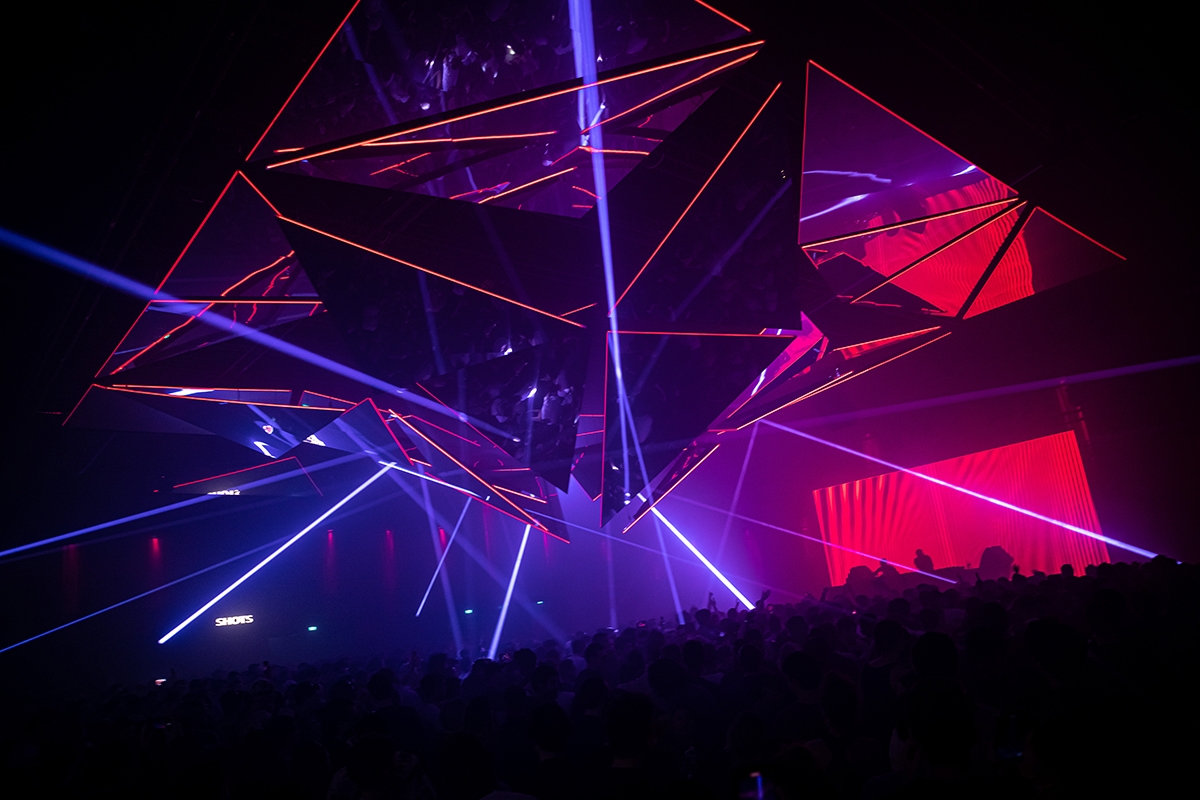
From a functional perspective, “Phantom” demonstrates a sophisticated integration of lighting, robotics, and minimal structural elements to form a multi-sensory experience. The light beams, reflecting and refracting across angled surfaces, direct the viewer’s attention and create shifting perspectives that continuously evolve with the rhythm of the music. This dynamic response to sound suggests an awareness of both the technological possibilities in lighting design and an understanding of audience engagement. However, the design’s reliance on large-scale mirrors and precision lighting might challenge visibility from certain angles, making it essential that the space and seating arrangements are carefully planned.
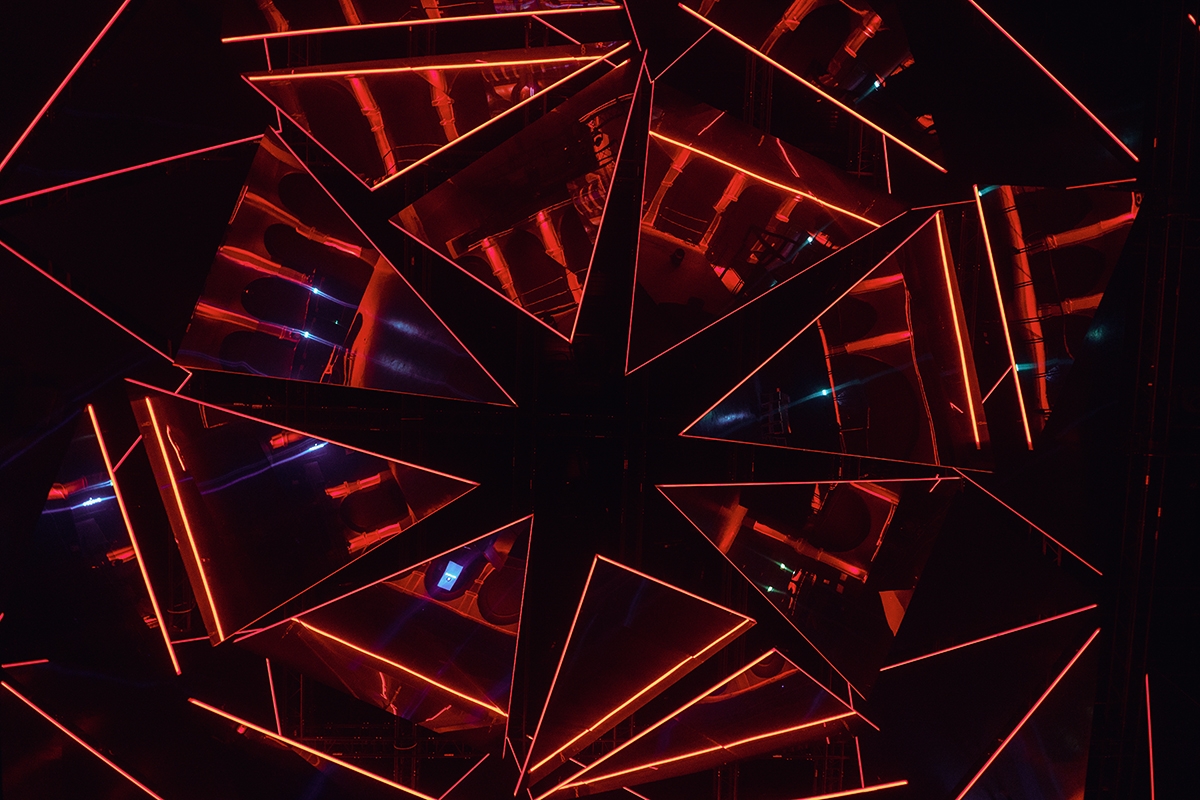
The aesthetic approach of “Phantom” combines futuristic minimalism with classical French baroque influences, presenting an interesting tension between past and future. The use of mirrors and arches brings to mind iconic architecture like the Louvre, but in a stylized, almost digital reinterpretation that feels rooted in both Parisian culture and a post-modern, abstract interpretation of time and space. The installation doesn’t just decorate the space; it transforms it into an interactive journey through emotions and perceptions, like a modern-day dance of light and shadow that makes the invisible appear tangible. This piece invites viewers to confront their reflections, thereby fostering an emotional connection with both the installation and the broader experience.
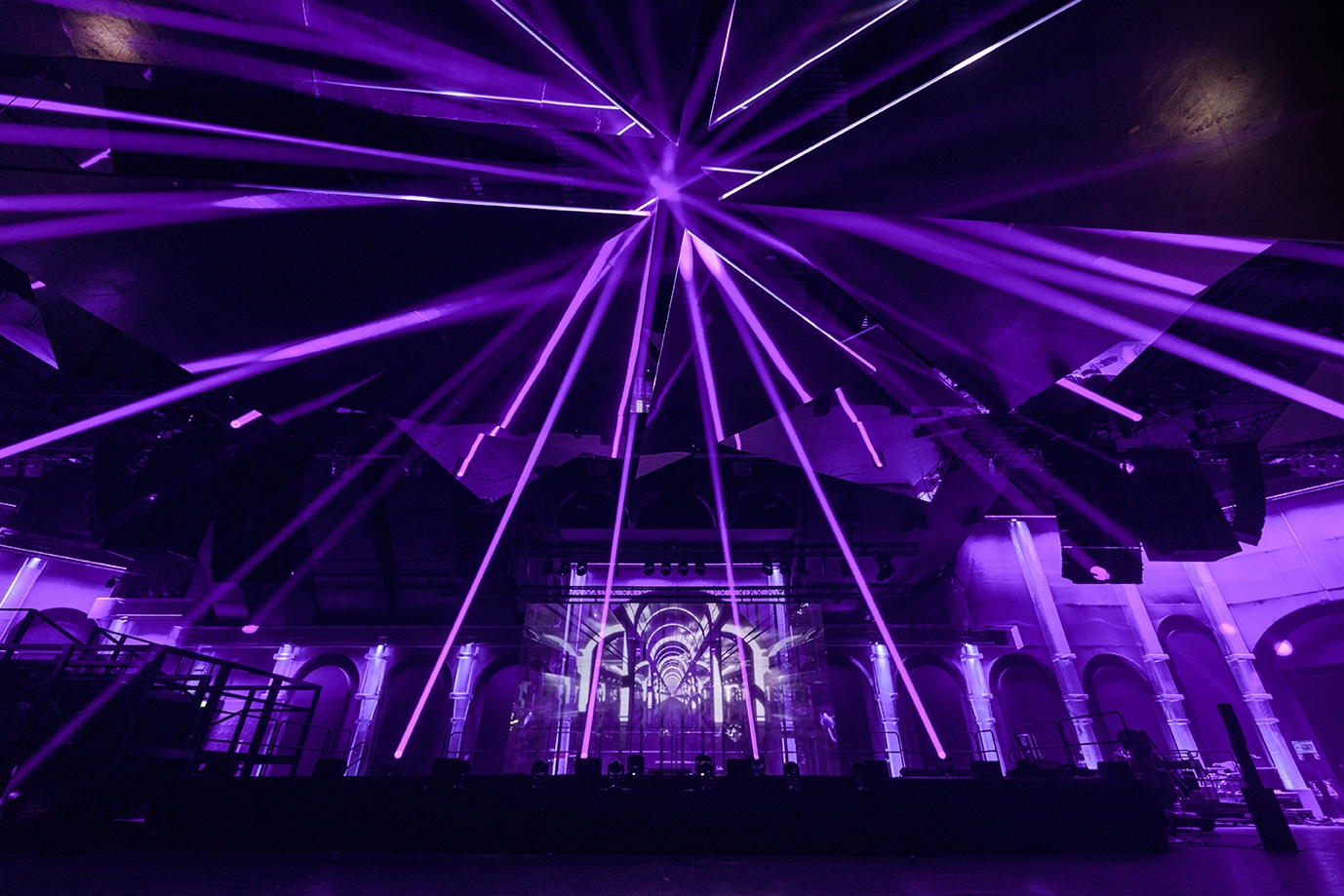
Brand : Light is More
Designer : Pauline David
Photo Credits : Julien Mouffron-Gardner, Antoine Decottignies, Pauline David
Prize: LIT Lighting Design Award
